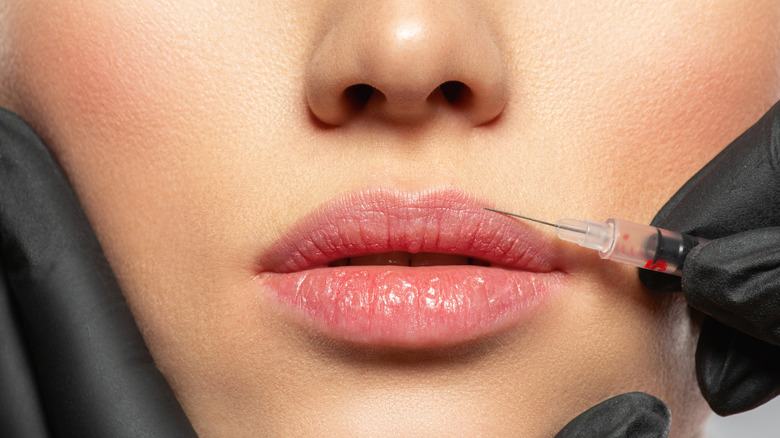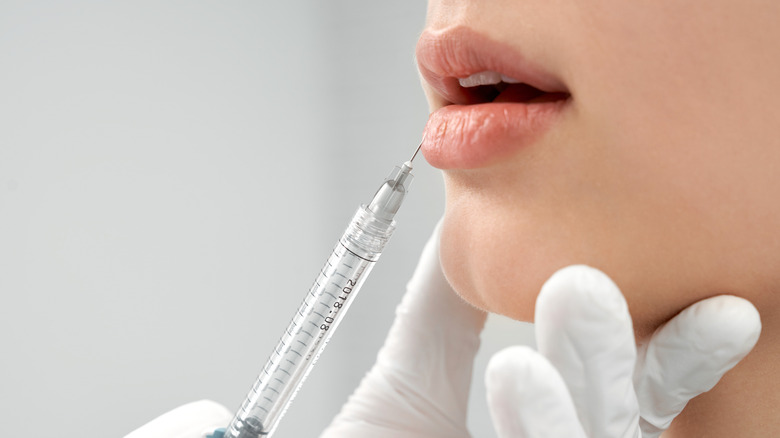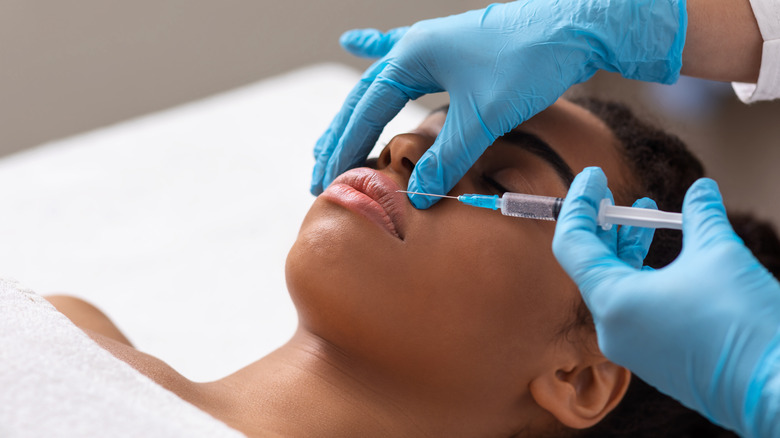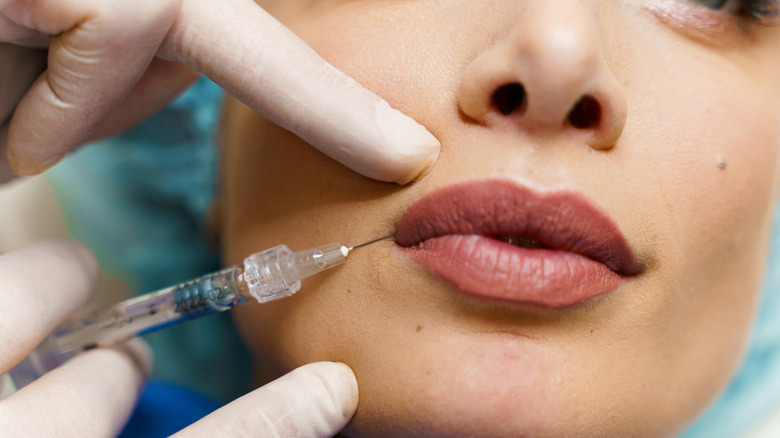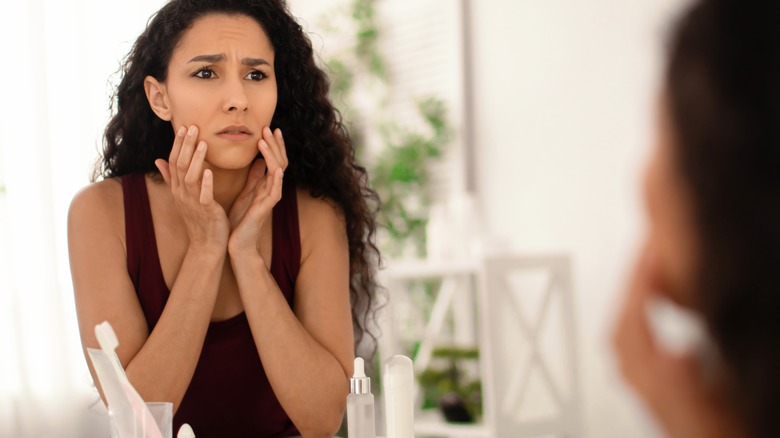How To Prevent Lip Filler Migration
Cosmetic procedures like Botox and fillers are the new trend, with celebrities like Kylie Jenner and the Kardashians elevating their looks by going under the needle. With more and more people getting treatments like hyaluronic acid fillers earlier in their life, it's no longer taboo to get a few tweaks done. According to a study by the American Study of Plastic Surgeons, 2.6 million people got fillers in 2016, which rose 2% from 2015. Many people strive to achieve full, voluminous lips and most rely on skin treatments to do so.
Although it doesn't happen to everyone, lip filler migration does occur and it can be very unpleasant to deal with. Lip filler migration is when the injected filler moves from the intended area to another unintentionally, which can leave you with obvious distortions or bumps. Your filler can migrate to both lips, leaving them looking over-filled and swollen.
The main causes of lip filler migration
Kay Durairaj, M.D., F.A.C.S., a Pasadena, California-based facial plastic surgeon tells Shape, "The typical scenario is that the filler will migrate just beyond the border of the lip, which is called the vermilion border, and it goes into the skin or cutaneous portion of the lip."
Lip filler migration can happen for a variety of reasons. One of the reasons lip filler migrates is when the wrong type of filler is used by an inexperienced injector. Hyaluronic acid fillers are the most popular and recommended fillers when trying to avoid migration and achieve a natural, plump look. When lip injections are placed too closely together or there are too many injections at the border of the lips, it's more likely you will experience migration. Fortunately, there are some preventative and cautionary steps and measures you can take to stop your filler from migrating.
Go to a reputable doctor
One of the most important things to do to help prevent lip filler migration is to get your cosmetic procedures done by a reputable doctor who you trust and that has stellar reviews. Before going under the needle, do your research and make sure you are going to a knowledgeable, experienced doctor that will give you the best possible results.
Dr. William McGillivray, founder of dermatology clinic and medispa Project Skin MD in Vancouver tells The Star, "Botox and fillers should only be administered in a controlled environment that is well lit, where the patient can be properly assessed, where there is time to get all their questions answered." If you aren't sure whether the doctor is registered, check the walls of their office. Most medical professionals will have their degrees and licenses in clear view.
You should also be filling out consent forms and reading through all of the risks and clauses carefully before signing and going under the needle.
Limit the time in between doctor visits
Another way to prevent lip filler migration is to extend the time between visits to your doctor for touch-ups. Oftentimes, those who regularly get lip filler become used to how their lips look and continue to get more and more filler, even when it's not necessary. According to the Victorian Cosmetic Institute, one of the most common side effects of too much lip filler is lip filler migration. If you notice your lips are bruised, sore, or swollen for a long period of time, you may have gotten too much lip filler.
Avoid going to your doctor too often for lip filler touch-ups and wait as long as you can between visits. Dr. Kay Durairaj tells Shape, "For people who want a very full look, I would recommend doing one syringe every month or two months to gradually layer it in as opposed to placing more than one syringe at a time."
Opt for a lip flip instead
An alternative to lip filler that could help you prevent having to deal with migration is a lip flip. A lip flip is a more subtle cosmetic procedure that gives volume to your upper lip. The results are not as obvious as you would get from lip filler and last up to five months. With a lip flip, the doctor will inject Botox into your upper lip which will cause it to slightly flip out, making it look plumper.
This is a great option, but for those who have a thin upper lip they want to enhance, Nicole Frontera, an aesthetic nurse practitioner in New York, tells Glamour, "If someone has a smaller lip, and we struggled with them even having an upper lip to begin with, then I might give them a bit of lip filler in conjunction with a lip flip so the lip stays nicely open."
What to do if you notice lip filler migration
In the case that you've already gotten lip filler and have noticed the filler has migrated, don't panic just yet. Many doctors recommend getting lip filler dissolved with hyaluronidase for quicker results. Lip filler can take two to three years to completely fade away, so you're better off taking action immediately if you notice something is off.
If you're considering getting hyaluronidase to dissolve your filler, have a consultation with your doctor and ask them about the risks and side effects beforehand. Like with any cosmetic procedure, there is a potential risk of an allergic reaction and complications. In a study in 2020 from Archives of Plastic Surgery on the side effects of hyaluronidase, allergic reactions were reported in 0.05% to 0.69% of patients. To avoid an allergic reaction, ask your doctor for a patch test to check how your body responds to hyaluronidase before getting any full doses.
